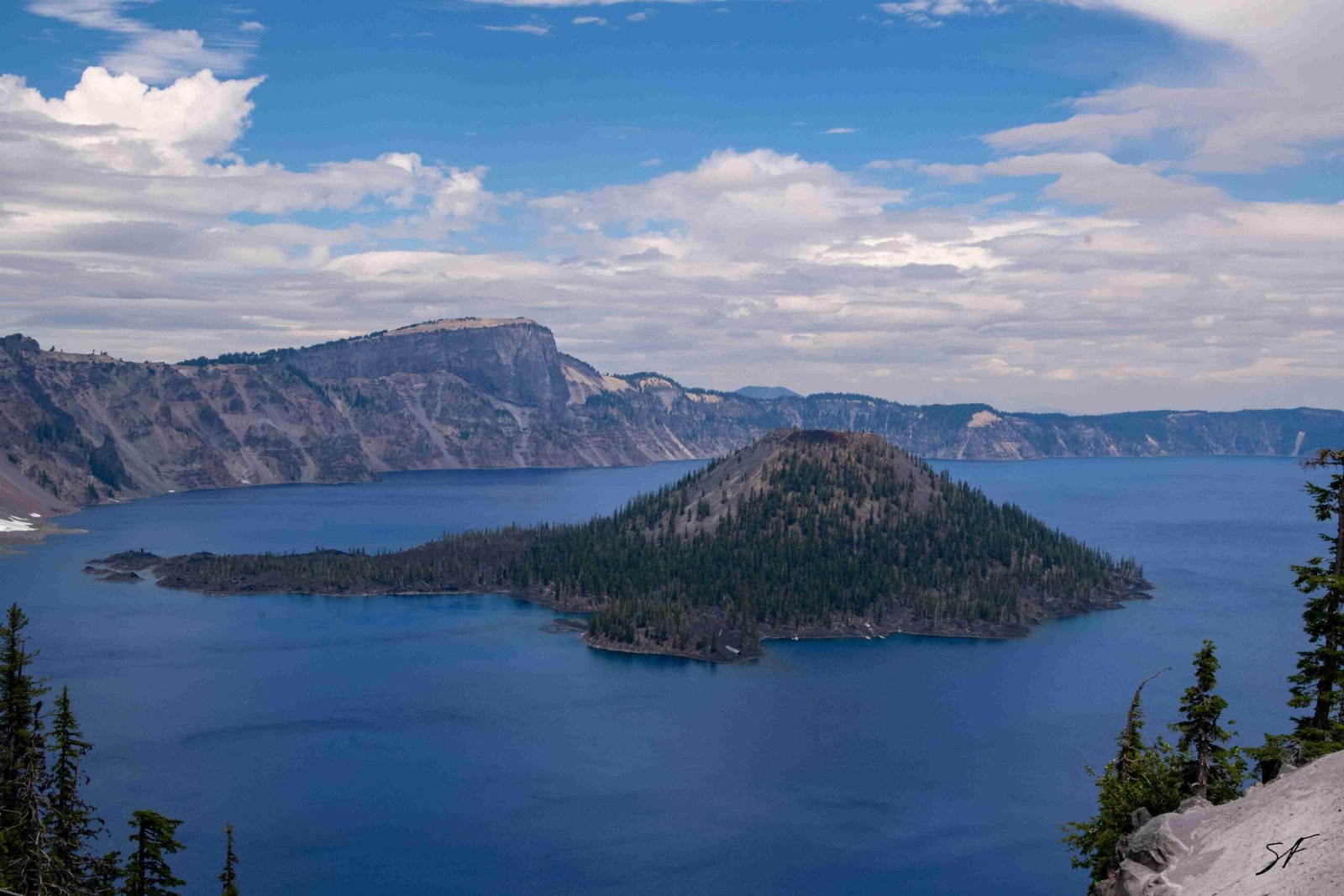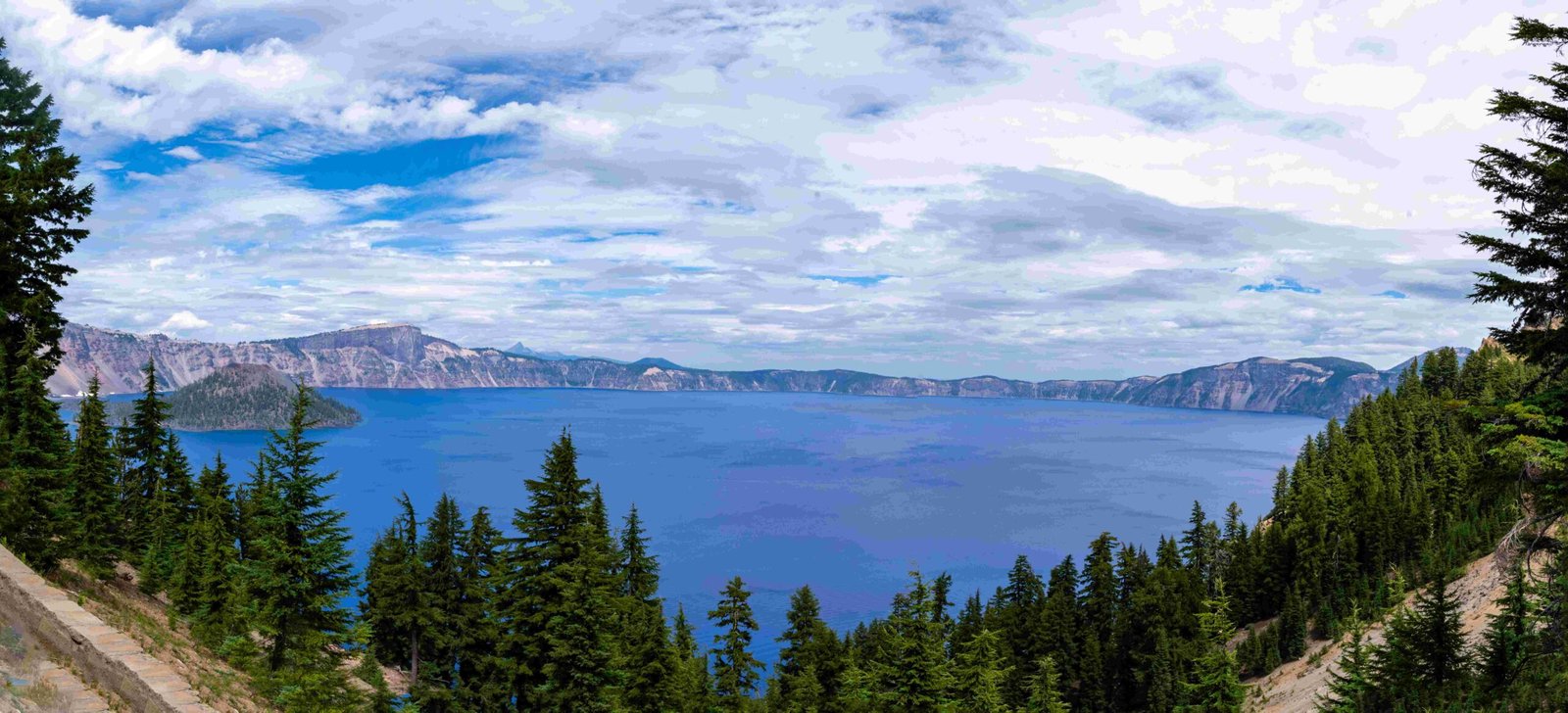Crater Lake, formed approximately 7,700 years ago, is a testament to the powerful volcanic forces that shaped the landscape of Oregon. This pristine body of water fills a caldera created by the catastrophic eruption and subsequent collapse of Mount Mazama. The lake’s formation marks a significant geological event, with its age providing crucial insights into the volcanic history of the Cascade Range and the broader Pacific Northwest region.
What is the Exact Age of Crater Lake?

Crater Lake’s age is precisely dated to about 7,700 years before present. This dating is based on extensive geological studies, including:
- Radiocarbon dating of organic materials
- Analysis of volcanic ash layers
- Examination of sediment cores from the lake bottom
The eruption that led to Crater Lake’s formation occurred in a single, catastrophic event, making its age determination more precise compared to other geological features.
How Was the Age of Crater Lake Determined?

Scientists used several methods to determine Crater Lake’s age:
- Tephrochronology: Study of volcanic ash layers
- Radiocarbon Dating: Analysis of organic materials in and around the caldera
- Dendrochronology: Examination of tree rings in ancient trees affected by the eruption
- Sediment Core Analysis: Study of lake bottom sediments
These methods, when combined, provide a robust and accurate age estimate for Crater Lake.
What Geological Events Led to Crater Lake’s Formation?
The formation of Crater Lake involved a series of geological events:
- Pre-eruption Period:
- Mount Mazama grew over 400,000 years through multiple volcanic episodes
-
The volcano reached a height of about 12,000 feet
-
Climactic Eruption:
- Occurred approximately 7,700 years ago
- Ejected about 50 cubic kilometers of magma
-
Ash fall reached as far as central Canada
-
Caldera Collapse:
- The emptying of the magma chamber caused the mountain to collapse
-
Created a caldera about 5 miles (8 km) in diameter
-
Lake Formation:
- Took 250-300 years for the caldera to fill with water
- Primarily filled by rain and snowmelt
How Does Crater Lake’s Age Compare to Other Volcanic Features?
| Volcanic Feature | Approximate Age | Location |
|---|---|---|
| Crater Lake | 7,700 years | Oregon, USA |
| Mount St. Helens (last major eruption) | 42 years (1980) | Washington, USA |
| Yellowstone Caldera | 640,000 years | Wyoming, USA |
| Mount Vesuvius (Pompeii eruption) | 1,943 years (79 AD) | Italy |
| Krakatoa | 139 years (1883) | Indonesia |
Crater Lake’s age places it as a relatively young feature in geological terms, but significantly older than many historical eruptions.
What Can Crater Lake’s Age Tell Us About Past Climate Conditions?
Crater Lake’s age provides valuable information about past climate conditions:
- Paleoclimate Records: Sediment cores from the lake bottom offer insights into climate variations over the past 7,700 years
- Vegetation Changes: Pollen records in the sediments reveal shifts in plant communities, reflecting climate changes
- Glacial History: The lake’s formation post-dates the last major glaciation, offering clues about post-glacial climate recovery
How Has Crater Lake Evolved Since Its Formation?
Since its formation 7,700 years ago, Crater Lake has undergone several changes:
- Water Level Stabilization: Reached its current level after about 250-300 years
- Volcanic Activity:
- Formation of Wizard Island (cinder cone) within the first few hundred years
- Underwater volcanic features like Merriam Cone
- Ecosystem Development:
- Gradual establishment of aquatic and terrestrial ecosystems
- Introduction of fish species in the late 19th century
- Geothermal Activity: Ongoing hydrothermal vents on the lake floor
What Future Changes Might Crater Lake Experience?
Based on its age and geological setting, potential future changes for Crater Lake include:
- Volcanic Activity: While currently dormant, the area remains volcanically active
- Climate Change Impacts:
- Potential alterations in water level and temperature
- Shifts in local ecosystems
- Erosion and Sedimentation: Gradual filling of the lake basin over geological time
- Geothermal Changes: Fluctuations in hydrothermal activity on the lake floor
How Does Understanding Crater Lake’s Age Benefit Scientific Research?
The precise age of Crater Lake offers numerous benefits to scientific research:
- Volcanic Hazard Assessment: Helps in understanding the frequency and magnitude of large eruptions in the Cascade Range
- Climate Studies: Provides a 7,700-year record of regional climate changes
- Ecological Research: Offers insights into ecosystem development and succession over millennia
- Geological Dating: Serves as a key marker for dating other geological events in the region
- Hydrological Studies: Aids in understanding long-term lake dynamics and water balance
In conclusion, the age of Crater Lake, precisely dated to about 7,700 years, is a crucial piece of information that unlocks a wealth of knowledge about volcanic processes, climate history, and ecological development in the Pacific Northwest. Its formation marks a significant geological event that continues to provide valuable insights across multiple scientific disciplines.
References:
1. Oregon Explorer: Geologic History of Crater Lake
2. USGS Fact Sheet: Crater Lake National Park
3. Wikipedia: Crater Lake

